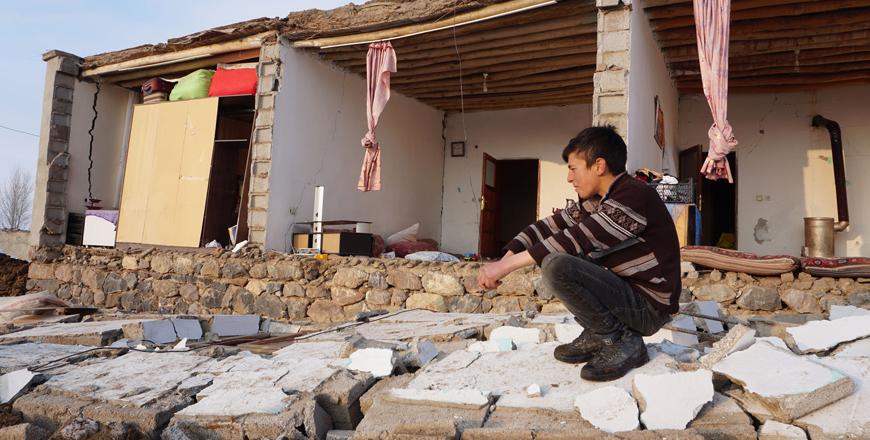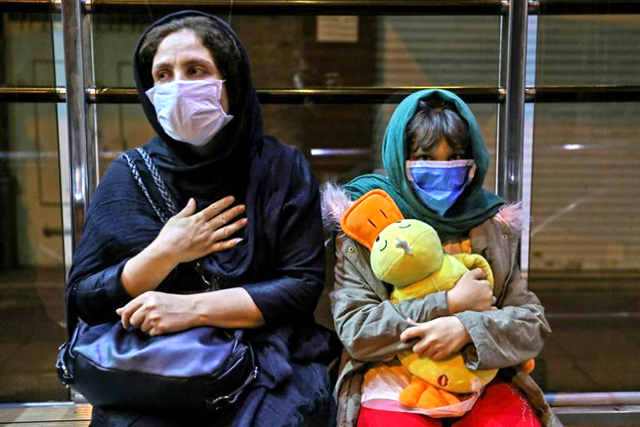You are here
Quake strikes near Iran nuclear power plant
By AFP - Dec 28,2019 - Last updated at Dec 28,2019
TEHRAN — An earthquake struck Iran on Friday less than 50 kilometres from the country’s only nuclear power plant, monitors said. There were no immediate reports of any casualties or damage.
The US Geological Survey said the 5.1 magnitude quake struck 44 kilometres from the south-western city of Borazjan and at a depth of 38 kilometres.
Its reported epicentre is 45 kilometres east of the Bushehr nuclear power plant, on the south-west Gulf coast.
The Iranian Seismological Centre said in a preliminary report on its website that the strength of the quake was 4.9 magnitude and that its depth was 10 kilometres.
The quake jolted villages near Kalameh city, the semi-official ISNA news agency said, adding there were no reports of any casualties or damage.
“Based on the assessments of teams in the field, fortunately this earthquake has caused no damage,” the head of the province’s crisis centre, Jahangir Dehghani, said on state television.
“The Ahram-Kalameh road was blocked by a landslide and it is currently being cleared,” he added.
Buildings in nearby towns and villages had some “cracked walls but nothing has collapsed”.
Photographs published by Iranian news agencies showed bulldozers clearing a road and damage done to the walls of a historical castle in Bushehr.
The Bushehr plant, which produces 1,000 megawatts of power, was completed by Russia after years of delay and officially handed over in September 2013.
In 2016, Russian and Iranian firms began building two additional 1,000-megawatt reactors at Bushehr. Their construction was expected to take 10 years.
Arab concerns
Iran’s Arab neighbours have often raised concerns about the reliability of the Bushehr facility and the risk of radioactive leaks in case of a major earthquake.
There were no immediate reports of damage to the facility.
The Islamic republic is seeking to reduce its reliance on oil and gas with 20 nuclear power plants planned over the coming years.
Its nuclear programme is at the centre of a dispute with the United States, which suspects Iran is trying to obtain a nuclear weapons capability, something the Islamic republic vehemently denies.
Tensions have escalated since May last year when US President Donald Trump withdrew from a landmark 2015 accord.
The Joint Comprehensive Plan of Action, or JCPOA, gave Iran relief from sanctions in return for curbs on its nuclear programme.
Iran sits on top of major tectonic plates and sees frequent seismic activity.
In November 2017, a 7.3-magnitude quake in the western province of Kermanshah killed 620 people.
In 2003, a 6.6-magnitude quake in southeastern Iran decimated the ancient mud-brick city of Bam and killed at least 31,000 people.
Iran’s deadliest quake was a 7.4-magnitude tremor in 1990 that killed 40,000 people in northern Iran, injured 300,000 and left half-a-million homeless.
Related Articles
TEHRAN/ISTANBUL — A magnitude 5.7 earthquake in northwestern Iran on Sunday killed nine people, including children, in neighbouring Tur
TEHRAN — An earthquake struck early Friday near Iran's highest peak and jolted Tehran, killing at least one person and injuring more than 20
Iran’s nuclear chief said Wednesday experts from Arab neighbours across the Gulf, concerned about the safety of Iran’s sole nuclear power plant, are welcome to visit the facility, IRNA news agency reported.













